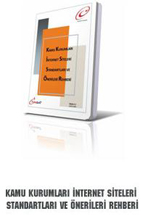Project-1
TITLE:
Eye tracking based dynamic real-time evaluation of
cognitive activities in computer supported learning
environments and effects of different human-computer
interface designs on these activities
Sponsored By TUBITAK. Project number: 104K098
ABSTRACT:
This project proposal aims to establish an eye-tracking setting to
research the factors that affect cognitive activities in information
and
communication technologies (ICT) based learning environments (i.e.
e-learning). These factors have direct implications on other major
knowledge society projects such as, e-government, e-business,
e-entertainment, e-health and e-citizens.
To be effective, an e-Learning system
must be able to actually transfer
the knowledge to the user, and this ability is highly influenced by
its
level of functionality, usability and acceptability. The learning level
reached by a subject can be evaluated by using typical psychological
tests
and questionnaires, but these methods require a high level of
collaboration from the examined subjects, and the results are mainly
qualitative and analytic. Moreover, the learning cognitive processes
assessed with these methods are only the results of learning and not
the
strategies or dynamic processes involved during such learning.
Since visual information can be
acquired when the image of the object of
interest falls on the fovea, eye movements are needed to shift the gaze
from one part of a visual scene the subject is exploring to the other.
The
visual scene, in this case, is represented by the computer display.
Consequently, the study of eye movements during visual exploration can
reveal where the subject is looking and for how long his gaze remains
on a
specific part of the screen. Detailed analysis can provide rich
information on both fixations and re-fixations that can be considered
as
quantitative indicators of the level of difficulty of the presentation.
The attention level of the subject
will be also considered, since the
actual duration of fixation alone is not enough to guarantee that the
subject is actually acquiring information. This requires other cognitive
parameters which need to be evaluated with experiments. When confronted
with an eLearning system, which areas are explored and for how long
influences significantly the level of learning and, in return, reveals
the
best location to put important information. If a part of the screen
is not
explored, the information there is not acquired by the subject.
The value of eLearning systems is
that they are generally interactive.
This supports active learning. Compared to traditional media, eLearning
systems do not only display learning content by sequential text or
graphics but also by user exploration. How the learner navigates is
therefore essential to the learning result. To find effective patterns
of
page design for different types of learning content, applying eye-tracking
methodology can reveal additional evidence combined with traditional
interaction evaluation methodology.
As a result of the project's activity,
guidelines for the implementation
of eLearning systems and also optimized prototypes will be made available.
Ultimately this will lead to the enhancement of education and training
systems which are both user-friendly and able to transfer knowledge
to
users. |





